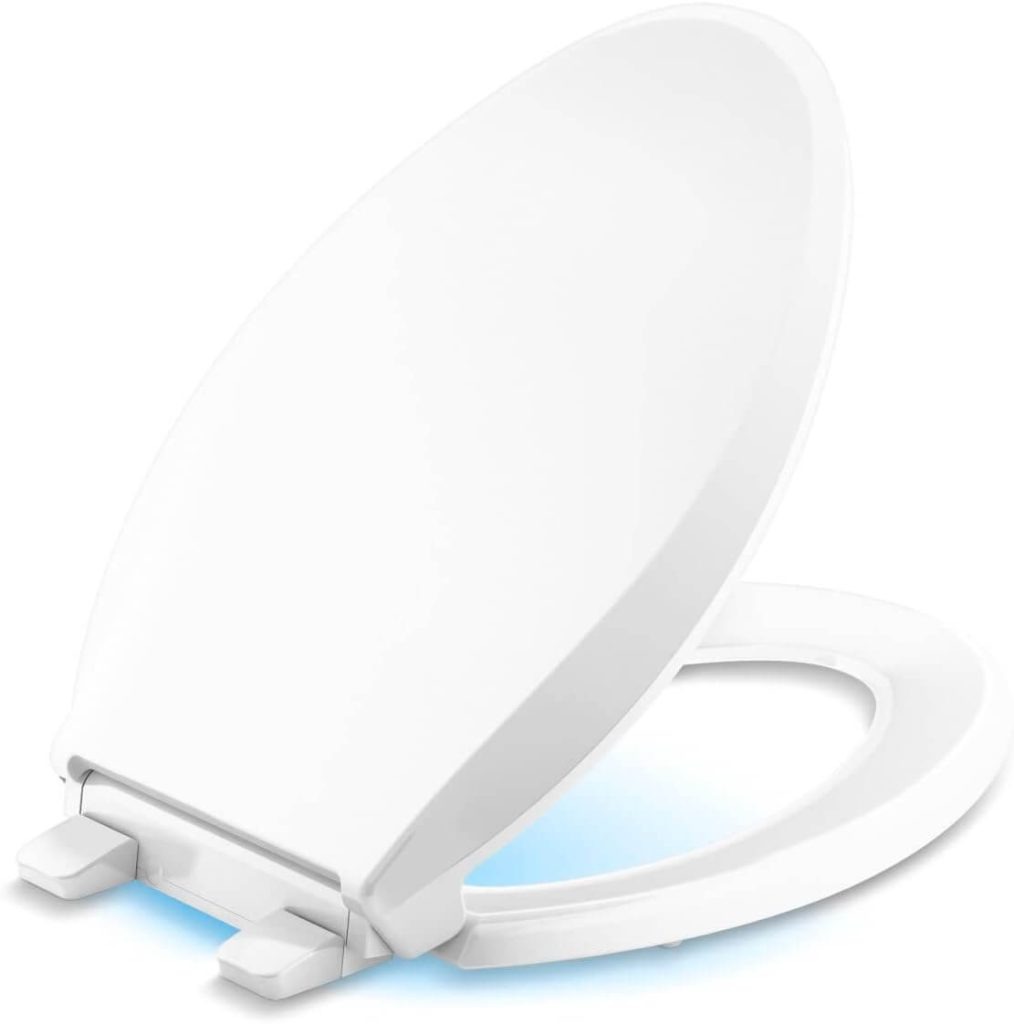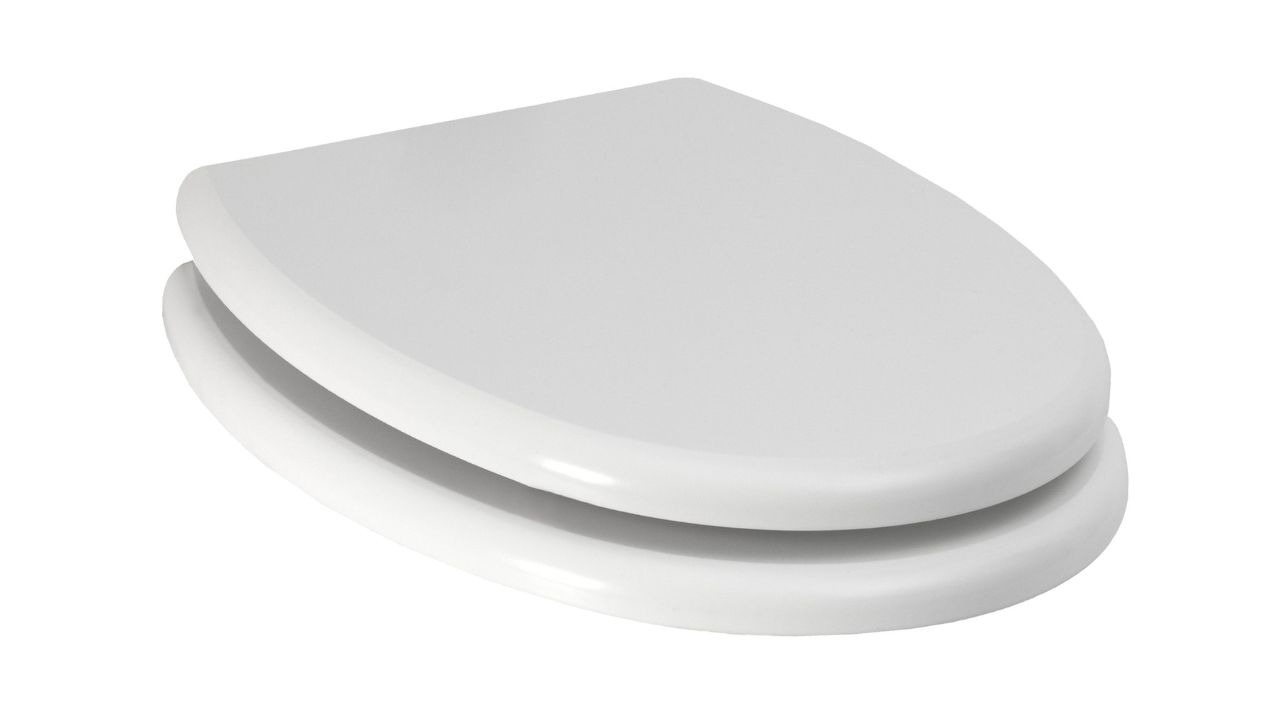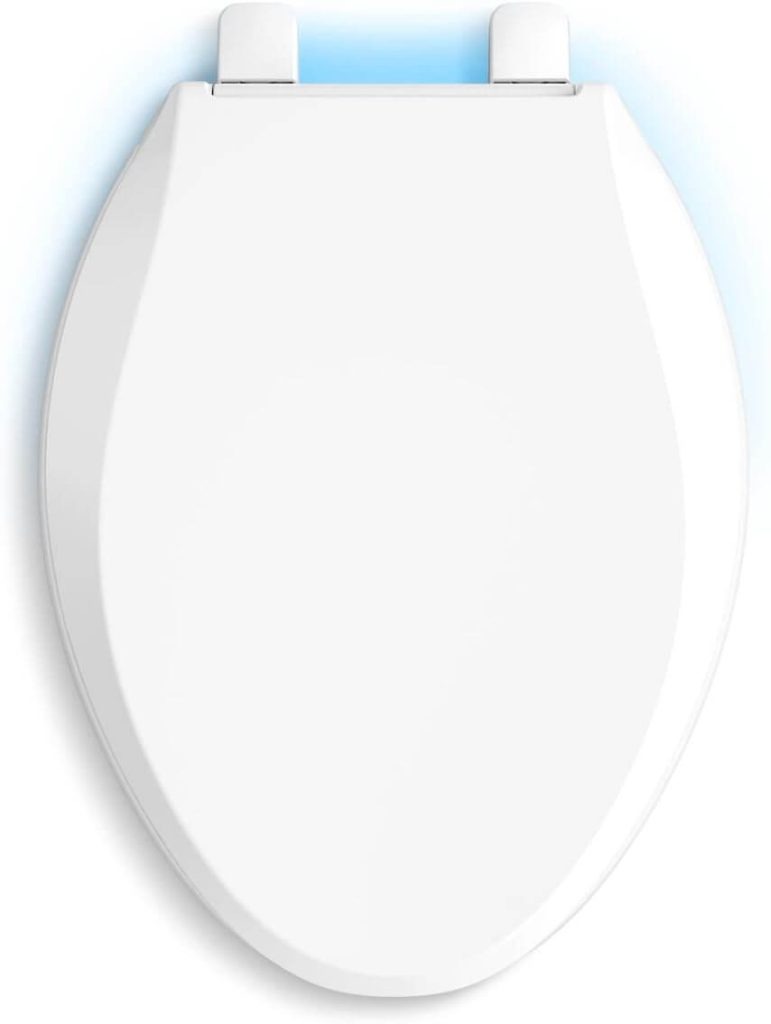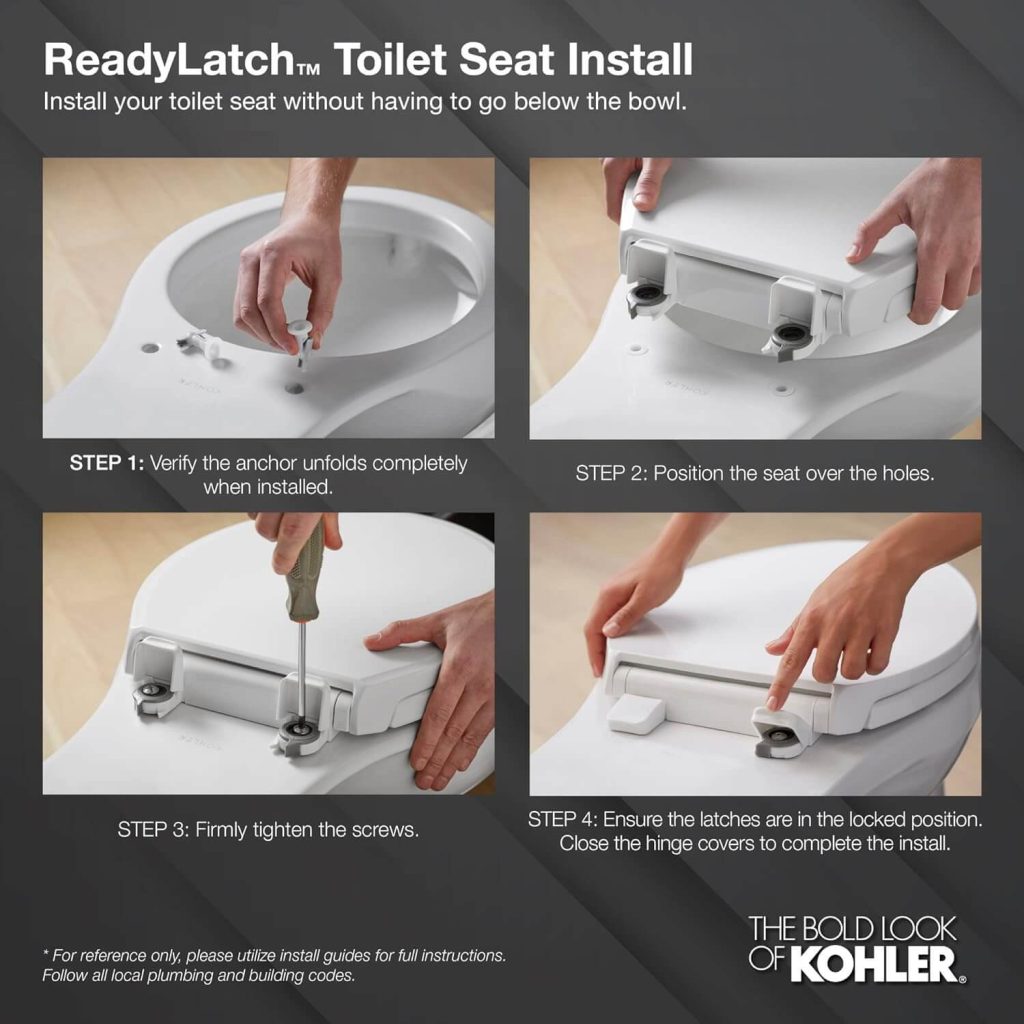Urine-diverting toilet seats separate urine and feces, allowing for ecological waste management. Urine-diverting toilet seats are a sustainable alternative to traditional toilets, as they separate urine from feces, enabling more efficient waste management.
By diverting urine into a separate collection system, these toilet seats not only reduce water consumption but also facilitate the recycling of valuable nutrients found in urine. This innovative approach to waste disposal plays a significant role in promoting environmental sustainability and resource conservation. We will delve into the mechanisms and benefits of urine-diverting toilet seats, exploring how they contribute to a greener and more sustainable future.
Understanding Urine Diverting Toilet Seats
When it comes to eco-friendly bathroom solutions, urine-diverting toilet seats have been gaining popularity in recent years. These innovative toilet seats not only help to conserve water but also contribute to sustainable waste management practices. In this section, we will delve deeper into urine-diverting toilet seats, exploring what they are and how they work. So, let’s get started!
What Are Urine Diverting Toilet Seats?
Urine-diverting toilet seats, also known as UDTs, are designed to separate urine and feces during the flushing process. Unlike conventional toilets that mix and flush away all waste together, UDTs maintain the separation of urine and feces, enabling more efficient waste management.
UDTs have a unique design that features separate channels or openings for urine and feces. The design may vary depending on the specific UDT model, but the main goal remains the same – to separate urine from feces. This separation is achieved through carefully designed channels and diverters within the toilet seat.
How Do Urine Diverting Toilets Work?
Urine-diverting toilets work by directing the flow of waste into separate containers or systems. When a person uses a UDT, they direct the urine towards a separate collection system, such as a drainpipe or a urine-diverting tank. On the other hand, they allow the feces to pass through to the regular sewage system or a composting system, where they can be processed in an environmentally friendly manner.
The separation of urine and feces has several advantages. For one, it allows for the more efficient treatment of urine, which contains valuable nutrients that can be used as fertilizer. Additionally, keeping urine away from the feces helps to reduce the formation of odor and minimizes the release of harmful gases, promoting better indoor air quality.
Besides environmental benefits, urine-diverting toilets also have practical advantages. When urine is separated, it doesn’t mix with water, resulting in a reduced amount of wastewater. This, in turn, helps to conserve water, making urine-diverting toilets a sustainable choice for areas where water scarcity is a concern.
Moreover, urine diversion can also contribute to resource recovery and circular economy principles, as the collected urine can be used for agricultural purposes, such as crop fertilization. This closed-loop approach reduces dependence on synthetic fertilizers and promotes a more sustainable and efficient use of resources.
All in all, Toilet seats that divert urine offer an innovative and eco-friendly solution to bathroom waste management. By separating urine and feces, these toilet seats not only save water but also allow for the recovery of valuable resources. With their multiple benefits and sustainable design, urine-diverting toilets are a step towards creating a greener future.

Urine-diverting toilet seats are revolutionizing the way we approach waste management and sustainable sanitation practices. These innovative fixtures offer a range of benefits, including water conservation, nutrient recycling, and the promotion of sustainable living. In this article, we will explore these advantages in detail, highlighting the positive impacts urine-diverting toilet seats can have on our environment and everyday lives.
Water Conservation
One of the key benefits of urine-diverting toilet seats is their ability to conserve water. Traditional flush toilets use large amounts of clean water to eliminate waste. With urine-diverting toilets, this wastefulness is drastically reduced. These toilets separate solid waste from liquid waste, allowing the liquid waste to be diverted into a separate container or drain. Because you only need to flush the solid waste, you can save a significant amount of water with every use.
Nutrient Recycling
Another compelling advantage of urine-diverting toilet seats is their contribution to nutrient recycling. Human urine is rich in vital nutrients such as nitrogen, phosphorus, and potassium, which are essential for plant growth. Diverting urine away from the regular sewage system enables the collection and treatment to extract these valuable nutrients. Users can then use this recycled urine as a natural fertilizer, promoting sustainable agriculture and reducing the need for chemical fertilizers. This nutrient recycling process not only helps protect our water sources from pollution but also contributes to a circular economy.
Sustainable Sanitation Practices
Urine-diverting toilet seats play a significant role in advancing sustainable sanitation practices. By separating urine from feces, these toilets minimize the production of harmful pollutants in wastewater. Traditional sewage treatment processes require complex and energy-intensive procedures to remove these pollutants. With urine-diverting toilets, the separation of waste at the source simplifies the treatment process and reduces the overall environmental impact. This promotes a more sustainable and cost-effective method of waste management, helping us move towards a greener future.
In conclusion, urine-diverting toilet seats offer a myriad of benefits that go beyond just saving water. Urine-diverting toilet seats contribute to water conservation, nutrient recycling, and sustainable sanitation, positively impacting our environment and fostering a more sustainable society. Incorporating them into our daily lives can significantly help preserve natural resources and create a healthier planet for future generations.
Challenges And Limitations
While urine-diverting toilet seats offer several benefits, they also come with their own set of challenges and limitations. This section will explore some of the key areas where these toilets face obstacles.
User Acceptance And Behavior Change
One of the primary challenges with urine-diverting toilet seats is user acceptance and behavior change. Transitioning from conventional toilets to these innovative seats requires individuals to alter their long-established restroom habits.
| Challenges | Solutions |
|---|---|
| Resistance to change | Educational campaigns to raise awareness about the benefits and proper usage of urine-diverting toilets. |
| Lack of understanding | Clear instructional materials and signage that explain how to use these toilets correctly. |
| Embarrassment or discomfort | Public education programs to normalize the use of urine-diverting toilets and make people feel more at ease. |
Infrastructure Requirements
Another significant challenge of using urine-diverting toilet seats is the need for appropriate infrastructure. Installing and maintaining these toilets entails specific considerations that may not be present in regular sanitation systems.
| Challenges | Solutions |
|---|---|
| Plumbing modifications | Engaging professional plumbers to ensure proper installation of urine diversion systems. |
| Space limitations | Integration of urine-diverting toilets into new building designs or retrofitting existing structures. |
| Regular maintenance | Establishing maintenance protocols and training staff on how to properly care for and clean these toilets. |
Waste Management And Treatment
Additionally, waste management and treatment pose challenges with urine-diverting toilet seats. Ensuring the safe and effective handling of diverted urine and feces is crucial to avoid environmental and health risks.
Challenges |
Solutions |
|---|---|
| Separation and storage | Designing appropriate storage systems to prevent the mixing of urine and feces and allow for easy removal. |
| Treatment technologies | Exploring different treatment methods such as composting, anaerobic digestion, or urine diversion for beneficial use. |
| Monitoring and regulation | Implementing monitoring systems and regulatory frameworks to ensure compliance with safety and environmental standards. |
In conclusion, urine-diverting toilet seats offer promising solutions for sustainable sanitation. However, challenges related to user acceptance and behavior change, infrastructure requirements, and waste management need to be addressed for their widespread adoption.
Applications And Implementation
Urine-diverting toilet seats have gained significant popularity in recent years due to their innovative design and eco-friendly functionality. These toilet seats efficiently separate and treat waste, offering various applications. This section explores their use in residences, public/commercial facilities, and community-scale projects.
- Nightlight Feature: The built-in nightlight adds a convenient and practical feature, providing illumination during nighttime bathroom visits.
- Ready Latch Technology: The Ready Latch system ensures easy and secure installation, enhancing user convenience and reducing the installation time.
- Elongated Design: The elongated shape of the toilet seat offers enhanced comfort, providing more seating space compared to round toilet seats.
- Quiet-Close Function: The Quiet-Close feature prevents slamming, ensuring a gentle and quiet closing of the toilet seat, reducing noise and potential damage.
- Easy Cleaning: The Quick-Release functionality allows for easy removal, facilitating thorough cleaning and maintenance.
- Durable Construction: Constructed by KOHLER, a reputable brand, the toilet seat is likely to have durable materials and quality craftsmanship, ensuring long-term reliability.
- Higher Cost: Compared to basic toilet seats, the inclusion of features like the nightlight and ReadyLatch technology may result in a higher upfront cost.
- Dependency on Electricity: The nightlight feature requires electricity, which may be a drawback in case of power outages or if there’s no electrical outlet near the toilet.
- Installation Complexity: While the ReadyLatch technology aims to simplify installation, some users may still find the installation process more complex than traditional toilet seats.
Residential Use
One of the primary applications of urine-diverting toilet seats is in residential settings. These toilet seats are increasingly being installed in private homes to promote sustainable waste management. By separating urine from solid waste at the source, urine-diverting toilet seats allow for the efficient treatment and utilization of both streams, leading to reduced water consumption and pollution.
In addition to the environmental benefits, urine-diverting toilet seats also offer practical advantages for homeowners. The separate collection of urine enables the production of nutrient-rich liquid fertilizer, which can be used to nourish plants and gardens. This closed-loop system not only eliminates the need for chemical fertilizers but also promotes sustainable gardening practices. Furthermore, the reduced water usage associated with urine diversion can result in significant cost savings for homeowners in the long run.
Public And Commercial Facilities
Urine-diverting toilet seats are also gaining traction in public and commercial facilities. These settings, which often witness high footfall, can greatly benefit from the implementation of urine diversion systems. By implementing urine-diverting toilet seats, these establishments can contribute to the preservation of water resources and the protection of the environment.
Efficiently treating and processing urine collected from public and commercial facilities can produce safe and odorless liquid fertilizers. Users can then utilize this resource for landscaping, and horticulture, or even sell it as a sustainable product. Urine-diverting toilet seats reduce water consumption, ease strain on sewage systems, aid public and commercial facilities in complying with environmental regulations and showcase sustainability commitment.
Community-scale Projects
Urine-diverting toilet seats have also found applications in community-scale projects, such as eco-villages, schools, and public parks. These projects strive to create self-sufficient and environmentally conscious communities, where waste management plays a crucial role.
By implementing urine diversion systems on a larger scale, these communities can achieve significant environmental benefits. Separately collecting and treating urine enables the production of liquid fertilizer for local agriculture. Community-scale projects on urine diversion also serve as educational platforms, raising awareness and encouraging widespread adoption of eco-friendly technologies.
Success Stories And Case Studies
Success stories and case studies highlight the real-life impact of urine-diverting toilet seats in various contexts. These stories showcase the effectiveness and sustainability of this innovative sanitation solution. From Sweden’s pioneering efforts to the eco-sanitation projects in developing countries, these case studies demonstrate the potential of urine-diverting toilets in addressing sanitation and environmental challenges. Let’s dive into these inspiring initiatives and learn how urine-diverting toilet seats have made a difference.
Urine-diverting Toilets In Sweden
In Sweden, urine-diverting toilets have gained significant popularity. This Scandinavian country has been at the forefront of sustainable waste management practices, and urine-diverting toilets have played a crucial role in their efforts.
By separating urine from feces at the source, these toilets enable the recycling of valuable nutrients while reducing the environmental impact of wastewater treatment. Swedish municipalities and individuals alike have embraced this technology, with positive results.
One example is the city of Linkoping, where authorities implemented urine-diverting toilets as part of their sustainable development strategy. By encouraging residents to install these toilets in their homes, they successfully diverted urine to a separate collection system.
The collected urine was treated locally and turned into valuable fertilizer, reducing the city’s dependence on chemical fertilizers and promoting a more sustainable and circular waste management approach.
Eco-sanitation Projects In Developing Countries
Eco-sanitation projects in developing countries have shown the immense potential of urine-diverting toilets in providing sustainable sanitation solutions. These projects aim to address the challenges faced by communities with limited access to proper sanitation facilities and safe wastewater management.
In countries like Kenya and Bangladesh, non-governmental organizations have implemented projects that promote the use of urine-diverting toilets in rural areas. These projects educate communities about the benefits of urine separation and provide access to affordable toilet options. By incorporating local resources and expertise, these initiatives have been successful in improving sanitation conditions and reducing water contamination.
The outcome of these projects has been remarkable. Not only have they improved hygiene practices and reduced the spread of diseases, but they have also contributed to sustainable agriculture. By harnessing the nutrient-rich urine as fertilizer, farmers are witnessing increased crop yields and improved soil quality.
Toilet seats diverting urine have the potential to revolutionize sanitation practices globally. Engaging communities, raising awareness, and implementing sustainable waste management systems, these toilets pave the way for a healthier and more environmentally friendly future.
Future Trends And Possibilities
In the rapidly evolving world of sanitation, urine-diverting toilet seats have emerged as a groundbreaking solution to address various environmental and health concerns. As technology continues to advance and policies around waste management take center stage, these toilet seats hold tremendous potential for the future. Let’s explore some of the exciting trends and possibilities that lie ahead.
Technological Advancements
Advancements in technology have already played an instrumental role in the development and improvement of urine-diverting toilet seats. Engineers and innovators are constantly seeking ways to enhance the functionality, durability, and user experience of these eco-friendly fixtures. With research and development being the driving force, here are some technological advancements that we can expect to see:
- Smart sensors integrated into toilet seats allow real-time monitoring of urine and feces separation for analysis. Self-cleaning mechanisms reduce maintenance and enhance hygiene, making urine-diverting toilet seats more user-friendly. Ongoing research focuses on advanced odor control systems to neutralize unpleasant smells for a better bathroom experience.
Policy And Regulation
As governments and organizations around the world prioritize sustainable development, policies and regulations focusing on waste management are becoming more stringent. Urine-diverting toilet seats are poised to play a significant role in meeting these requirements and promoting a circular economy. Here are some key policy and regulation trends to watch:
- Mandatory Installation: Governments may make it mandatory to install toilet seats that divert urine in new residential and commercial buildings, encouraging widespread adoption of this eco-friendly sanitation technology.
- Financial incentives and subsidies may be introduced to promote the installation of toilet seats that divert urine, especially in low-income communities and areas facing sanitation challenges.
- • Establishing comprehensive guidelines can ensure proper waste separation, collection, and treatment, with toilet seats that divert urine being a key pillar in these waste management strategies.
Integration With Circular Economy Principles
Urinating diverting toilet seats inherently aligns with the principles of the circular economy, wherein resources are conserved and waste is minimized through recycling and reuse. The integration of urine diversion technology into broader waste management practices can lead to the following possibilities:
| Possibilities | Benefits |
|---|---|
| Conversion of Urine into Fertilizer | By collecting and treating urine separately, it can be transformed into nutrient-rich fertilizer, reducing the need for synthetic fertilizers and closing the nutrient cycle in agriculture. |
| Recovery of Phosphorus | Phosphorus, a valuable and limited resource, can be extracted from urine and reused in various industrial applications, reducing dependency on mining and mitigating environmental impacts. |
| Closed-loop Water Systems | Integration of toilet seats that divert urine with water treatment plants can enable the recovery and reuse of water, contributing to the conservation of this precious resource. |
Frequently Asked Questions On Urine Diverting Toilet Seats
How Does A Urine Diverting Toilet Work?
A urine-diverting toilet separates liquid waste from solid waste to prevent contamination. Liquid waste goes into a separate drain for use as fertilizer or greywater, while solid waste is collected for composting. This reduces water usage and promotes eco-friendly waste management.
Do You Need A Urine Separator For A Composting Toilet?
Yes, a urine separator is necessary for a composting toilet. It helps separate liquid waste from solid waste, allowing for better composting and odor control.
How Do You Make A Urine Separator?
To make a urine separator, start by designing a container with separate compartments for urine and other waste. Install a funnel or pipe that collects urine and redirects it to a separate container for storage or disposal. Ensure proper ventilation and maintenance for effective use.
What Is A Urine Separator?
A urine separator is a device used in composting toilets to separate urine from solid waste. It helps in the proper management and treatment of human waste. The separator directs urine into a separate container, reducing odor and improving compost quality.
What Is A Urine Diverting Toilet Seat?
A urine-diverting toilet seat is a specialized toilet seat that separates urine from solid waste, allowing for separate disposal or treatment.
How Does A Urine Diverting Toilet Seat Work?
A urine-diverting toilet seat works by having two separate openings, one for urine and one for solid waste. The urine is redirected to a separate container or system for disposal or treatment.
Why Should I Use A Urine Diverting Toilet Seat?
Using a urine-diverting toilet seat helps to conserve water, prevents contamination of water sources, and enables the separation of waste for more efficient resource recovery.
Are Urine Diverting Toilet Seats Easy To Install?
Yes, urine-diverting toilet seats are designed to be easily installed on existing toilets, usually without the need for any major modifications.
Can Urine Diverting Toilet Seats Be Used In Any Bathroom?
Urine-diverting toilet seats can be used in most bathrooms, as long as there is a conventional toilet bowl that they can be installed.
Are Urine Diverting Toilet Seats Sanitary?
Yes, urine-diverting toilet seats are designed to maintain proper sanitation, with separate compartments for urine and solid waste.
Conclusion
To sum up, urine-diverting toilet seats offer a sustainable solution to manage human waste while preserving water resources and protecting the environment. By separating urine from solid waste, these innovative toilets allow for efficient nutrient recycling and reduce the need for traditional sewage systems.
With their practicality and eco-friendly design, Toilet seats that divert urine are poised to revolutionize the way we handle sanitation, creating a cleaner and more sustainable future for all.








